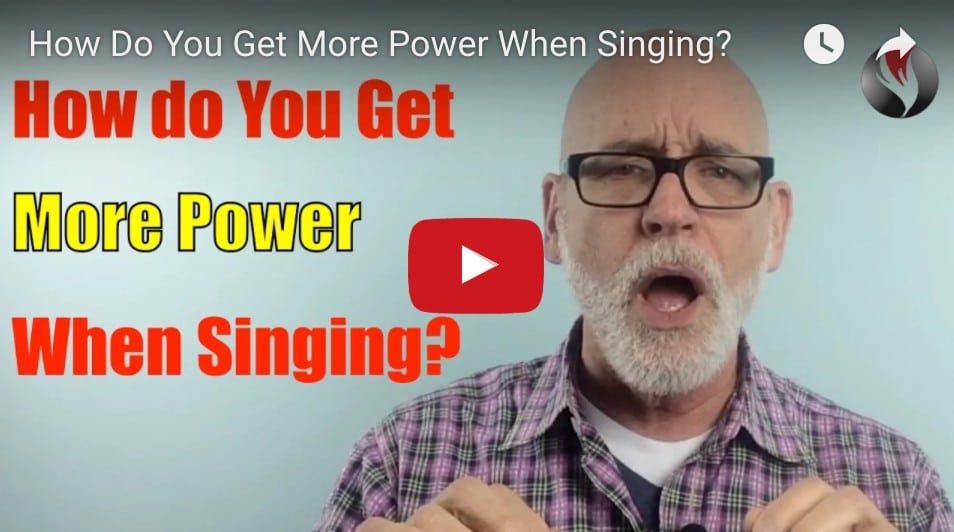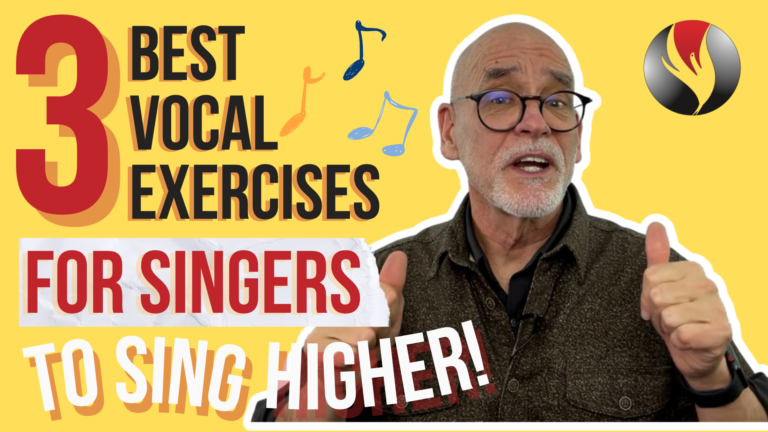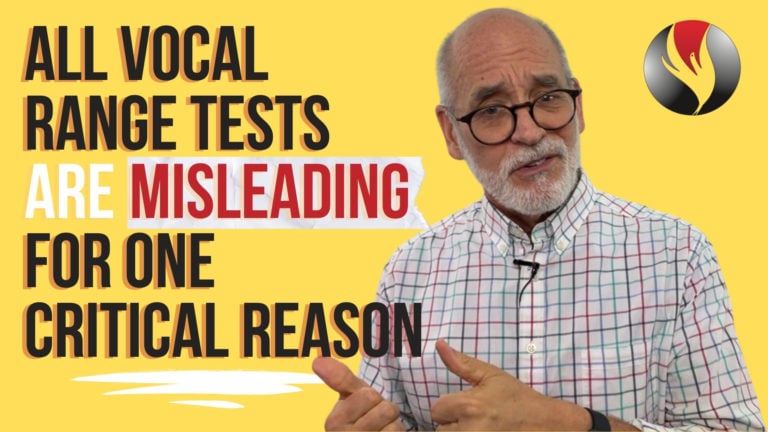How Do You Get More Power When Singing?
One of my Youtube subscribers, Chuck Nourrizzz, listened to Episode 61, How to Sing Mixed Voice – Tension is our Enemy. In that video I used the phrase “build into that by pressing down gradually” and later I said “pressing into the feeling of no tension”.
In the comment section he asked, “What does it mean by pressing down?”
This is an advanced singing concept that can give you more power when singing and make a big positive difference in your vocal tone if done correctly. Inside this video I’ll show you.
How Do You Get More Power When Singing?
What is “pressing down”? How do you “press down” with your voice? It’s also referred to as “press in” or “lean in”.
This is a great question and shows that Chuck Nourrizzz was really listening and trying to learn as much as possible. Many listeners would let it pass and not seek better understanding.
Here’s what it sounds like without adding any reach to the voice. By that I mean, here’s what pressing down sounds like with a larynx that remains at speech level. [Demo]
That is pressing down correctly.
Here is pressing down but allowing a rising larynx…or “reach”. In other words, as I try and press down, I’m reaching upward with the larynx, which introduces unwanted tension from the extrinsic neck muscles. [Demo]
Physically what it happening when I press down correctly.
- I am increasing the airflow from my lungs while maintaining a balance with the vocal cords. That means I’m not overpowering the vocal cords and blowing them apart, nor am I introducing extrinsic muscle tension. [Demo]
- The balance between airflow and vocal cords allows them to open and close, going through the vibration cycle, more fully or completely from top to bottom, freely without tension.
- This results in a very “speech-like” sound with a full complement of overtones. It’s strong and powerful. [Demo]
- We must be able to do this from our chest voice, through the bridge and into head voice without “reaching” or pulling the larynx up. [Demo]
Physically what is not happening:
- You are not squeezing or constricting the abdomen, throat or anything else. [Demo]
What are the Prerequisites to Pressing Down Correctly?
- We must be able to bridge without tension. That is, sing from chest voice through the bridge into head voice without interruption in tone and without strain or reach. [Demo]
- Good balance is present in the voice. This means the vowels are not spreading, the larynx stays at speech level, there is optimal balance between the airflow and the vocal cords, the pitch is correct, and there’s consistent, even vibrato. [Demo]
- This may be debateable, but I think an important prerequisite is the presence of release first in the singing voice in the bridges and head voice before trying to press in or press down. [Demo]
The advanced skill of “pressing down” or “pressing in” comes after you are able to do those above things.
Vocal Type
Knowing and understanding your vocal type is an important early step to being able to press in. Why? Because if you tend to pull chest, or flip or crack or go breathy, you’ll never be able to press in without added tension.
Do you know your vocal type? I’m not referring to whether you’re soprano, alto, tenor or bass. Your vocal type is what you tend to do when you sing through the bridge.
Visit PowerToSing.com and take the vocal test which I call the PowerTest. Take the quiz and discover your vocal type. Then visit the Knowledge Center and watch the videos about your vocal type. Download the free exercises for your vocal type and start improving your voice rapidly.
I’m Chuck Gilmore with Power To Sing. You can sing higher with beauty, confidence and power.
I’ll see you inside the next video.











Responses
Hi Ashley: How old are you?
Hi Chuck,
I am not able to feel chest voice or head voice etc and can feel no vibrations in any areas at all.Do you know what’s wrong with me?
The demonstrations in this video are very clear in showing the correct and incorrect ways of projecting the voice. They reinforce what you taught in previous videos. Personally I don’t care about the terms ‘pressing in’ or ‘pressing down’, as long as I know I’m doing it right. And this video has shown me how. Thanks Chuck!